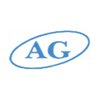Filter interviews by
Sanjeev Auto Parts Manufacturers Graduate Apprentice Trainee Interview Questions, Process, and Tips
Sanjeev Auto Parts Manufacturers Graduate Apprentice Trainee Interview Experiences
1 interview found
Interview Questionnaire
7 Questions
- Q1. What is gear
- Ans.
A gear is a mechanical component that transmits power and motion between rotating shafts.
Gears are used to change the speed, torque, and direction of power transmission.
They consist of toothed wheels that mesh with each other to transmit power.
Gears are commonly used in machines such as cars, bicycles, and watches.
Different types of gears include spur gears, bevel gears, and worm gears.
- Q2. Process of gear manufacturing
- Ans.
Gear manufacturing involves several processes including casting, forging, machining, and heat treatment.
The first step is to design the gear and select the appropriate material.
The material is then cast or forged into the desired shape.
The gear is then machined to achieve the required dimensions and surface finish.
Heat treatment is then performed to improve the strength and durability of the gear.
Finally, the gear is i...
- Q3. What is module , pressure angle , addendum and dedendum
- Ans.
Module, pressure angle, addendum, and dedendum are terms used in gear design.
Module is the measure of the size of a gear tooth.
Pressure angle is the angle between the line of action and a tangent to the pitch circle.
Addendum is the radial distance between the pitch circle and the top of the tooth.
Dedendum is the radial distance between the pitch circle and the bottom of the tooth.
These terms are important in designing ...
- Q4. Name of G Code
- Ans.
G Code is a language used in CNC machines to control their movements and operations.
G Code is a series of commands that tell the machine what to do.
It is used in CNC machines for tasks such as cutting, drilling, and milling.
Each G Code command has a specific function and is followed by a numerical value.
Examples of G Codes include G00 for rapid positioning, G01 for linear interpolation, and G02 for circular interpolati
- Q5. What's 5s system and 7qc system
- Ans.
5S is a workplace organization method and 7QC is a quality control tool used in manufacturing.
5S focuses on organizing the workplace to improve efficiency and reduce waste.
7QC involves seven quality control tools used to identify and solve problems in manufacturing processes.
Examples of 5S include sorting, simplifying, sweeping, standardizing, and self-discipline.
Examples of 7QC tools include Pareto charts, cause-and-e
- Q6. Different types of Gear
- Ans.
Gears are mechanical components that transmit power and motion between rotating shafts.
Spur gears
Helical gears
Bevel gears
Worm gears
Planetary gears
- Q7. Final year project
Interview Preparation Tips
Interviewer wanted to know about our technical skills and management skills also
Top trending discussions






Interview questions from similar companies

Graduate Apprentice Trainee Interview Questions & Answers
Toyoda Gosei Mindaposted on 5 Feb 2024
I applied via Campus Placement and was interviewed before Feb 2023. There was 1 interview round.
(1 Question)
- Q1. Industrial engineer questions,six sigma
Interview Preparation Tips

I applied via Recruitment Consulltant and was interviewed before Oct 2021. There were 3 interview rounds.

(1 Question)
- Q1. Documents OEE , rejection handling , cnc vmc machine handling,
(1 Question)
- Q1. General and basics questions
Interview Preparation Tips

I appeared for an interview in Aug 2023.
(2 Questions)
- Q1. Why are you change job ?
- Q2. What is your notice period?
(5 Questions)
- Q1. What is your KPI
- Ans.
My KPI as a Production Engineer is to ensure efficient production processes, minimize downtime, and optimize product quality.
Monitoring and improving production efficiency
Reducing downtime through preventive maintenance
Implementing quality control measures
Optimizing production output
Analyzing and improving production costs
- Q2. How to calculate OEE
- Ans.
OEE (Overall Equipment Efficiency) can be calculated by multiplying Availability, Performance, and Quality percentages.
Calculate Availability by dividing the total operating time by the planned production time.
Calculate Performance by dividing the actual production rate by the maximum production rate.
Calculate Quality by dividing the good units produced by the total units produced.
Multiply the Availability, Performance
- Q3. What is 4M and what is retroactive & prospective
- Ans.
4M is a methodology used in production engineering. Retroactive refers to actions taken after an event, while prospective refers to actions taken before an event.
4M is a methodology used in production engineering that stands for Man, Machine, Material, and Method.
Man refers to the human resources involved in the production process.
Machine refers to the equipment and tools used in production.
Material refers to the raw m...
- Q4. What is base documents of control plan
- Ans.
The base documents of a control plan include process flow diagrams, work instructions, and quality standards.
Process flow diagrams outline the sequence of steps in the production process.
Work instructions provide detailed instructions on how to perform each step of the process.
Quality standards define the criteria for acceptable quality and specify the required inspections and tests.
Other base documents may include con...
- Q5. What is 5W 1H
- Ans.
5W 1H is a technique used to gather information by asking five 'W' questions and one 'H' question.
5W 1H stands for Who, What, When, Where, Why, and How.
It is commonly used in journalism, problem-solving, and project management.
By asking these questions, one can gather comprehensive information about a situation or problem.
For example, in a production engineering context, the 5W 1H questions could be: Who is responsible...

I applied via Recruitment Consulltant and was interviewed in Jun 2023. There were 4 interview rounds.

(1 Question)
- Q1. Questions was technical as injection Moulding
(1 Question)
- Q1. Jobs related Questions
(1 Question)
- Q1. Only salary discotions

I appeared for an interview in Sep 2024.
(5 Questions)
- Q1. What were your job responsibilities in your previous position?
- Ans.
In my previous role as a Production Engineer, I managed production processes, optimized workflows, and ensured quality standards.
Oversaw daily production operations, ensuring efficiency and adherence to schedules.
Implemented process improvements that reduced production time by 15%.
Collaborated with cross-functional teams to troubleshoot and resolve production issues.
Conducted regular quality control inspections to main...
- Q2. How many personnel did you manage?
- Ans.
I managed a team of 10 personnel, overseeing their daily tasks and ensuring project goals were met efficiently.
Led a team of 10 engineers in a manufacturing project, coordinating schedules and tasks.
Implemented training programs for new hires, improving team productivity by 15%.
Conducted regular performance reviews, providing feedback and setting goals for team members.
Facilitated communication between departments to s
- Q3. What is the purpose of a " Why Why" analysis?
- Ans.
A 'Why Why' analysis identifies root causes of problems by repeatedly asking 'why' to uncover underlying issues.
Helps in identifying the root cause of a problem rather than just addressing symptoms.
Involves asking 'why' multiple times (typically five) to drill down to the core issue.
Example: If a machine breaks down, asking 'why' could lead to discovering inadequate maintenance practices.
Encourages a systematic approac...
- Q4. What are the implications of the 5S methodology?
- Ans.
5S methodology enhances workplace efficiency through organization, cleanliness, and standardization.
Sort (Seiri): Remove unnecessary items from the workspace. Example: Discarding outdated tools.
Set in Order (Seiton): Organize tools and materials for easy access. Example: Labeling storage areas.
Shine (Seiso): Clean the workspace regularly to maintain a safe environment. Example: Daily cleaning schedules.
Standardize (Sei...
- Q5. What products did you assemble during your experience?
(2 Questions)
- Q1. What kaizen initiatives have you implemented to reduce time?
- Ans.
Implemented kaizen initiatives to streamline processes, reduce waste, and enhance efficiency in production workflows.
Conducted time-motion studies to identify bottlenecks in the assembly line, leading to a 15% reduction in cycle time.
Introduced standardized work procedures that minimized variability and improved training efficiency for new employees.
Implemented a visual management system using Kanban boards to track wo...
- Q2. Are you familiar with the concept of the eight types of waste in lean manufacturing?
- Ans.
The eight types of waste in lean manufacturing focus on eliminating inefficiencies to enhance productivity and value.
1. Overproduction: Producing more than needed, e.g., making 100 units when only 50 are required.
2. Waiting: Idle time when resources are not being utilized, e.g., workers waiting for materials.
3. Transport: Unnecessary movement of products, e.g., moving items across the facility multiple times.
4. Extra P...
(2 Questions)
- Q1. Are you willing to relocate to Neemrana?
- Ans.
Yes, I am open to relocating to Neemrana for the opportunity to grow and contribute as a Production Engineer.
Relocating to Neemrana aligns with my career goals and aspirations.
I am excited about the potential to work in a new environment and learn from different challenges.
I have previously relocated for work, such as moving to a different city for an internship, which helped me adapt quickly.
I believe that working in ...
- Q2. What are your salary expectations?
Interview Preparation Tips

(1 Question)
- Q1. What is the production
- Ans.
Production is the process of creating goods or services using resources such as labor, machinery, and materials.
Production involves converting raw materials into finished products
It includes activities such as manufacturing, assembling, and packaging
Efficient production processes can lead to cost savings and increased output

I appeared for an interview in Aug 2024.
English, maths and puzzles basic preparation.
Question
Add four work before work,guard to make meaningful word
Interview Preparation Tips

I applied via Naukri.com and was interviewed in Dec 2021. There were 3 interview rounds.
Interview Questionnaire
3 Questions
- Q1. Just go through your job responsibilities,as it is Japanese firm so don't forget to know Japanese terms such as - 5's,KAIZEN,POKA-YOKE etc
- Q2. Root cause analysis techniques/methods, situation based questions as- how will.u react as u get to know there is line rejection.....
- Q3. Kaizen example, and they are very serious about workplace safety.... So POKE YOKE and it's principles are must...
Interview Preparation Tips
Hope this will help u.
Good luck for interview..

Production Engineer Interview Questions & Answers
Toyoda Gosei Mindaposted on 3 Apr 2024
(1 Question)
- Q1. 7QC tools, 5'S, OEE formula, 4M change management, analysis,
Sanjeev Auto Parts Manufacturers Interview FAQs
Tell us how to improve this page.
Sanjeev Auto Parts Manufacturers Interviews By Designations
- Sanjeev Auto Parts Manufacturers Production Engineer Interview Questions
- Sanjeev Auto Parts Manufacturers Senior Electrical Engineer Interview Questions
- Sanjeev Auto Parts Manufacturers NPD Engineer Interview Questions
- Sanjeev Auto Parts Manufacturers Graduate Apprentice Trainee Interview Questions
- Sanjeev Auto Parts Manufacturers Executive Quality Assurance Interview Questions
- Sanjeev Auto Parts Manufacturers Officer Interview Questions
- Sanjeev Auto Parts Manufacturers Quality Manager Interview Questions
- Sanjeev Auto Parts Manufacturers Production & Quality Engineer Interview Questions
- Show more
Interview Questions for Popular Designations
- Apprentice Interview Questions
- Apprentice Trainee Interview Questions
- Apprenticeship Trainee Interview Questions
- Graduate Apprenticeship Trainee Interview Questions
- Diploma Apprentice Trainee Interview Questions
- Apprentice Engineer Interview Questions
- Graduate Engineer Apprentice Interview Questions
- Graduate Apprentice Interview Questions
- Show more
Interview Questions from Similar Companies

Sanjeev Auto Parts Manufacturers Graduate Apprentice Trainee Reviews and Ratings
based on 3 reviews
Rating in categories
|
Specialist
28
salaries
| ₹0.9 L/yr - ₹7 L/yr |
|
Production Engineer
27
salaries
| ₹1.5 L/yr - ₹4.5 L/yr |
|
Quality Engineer
22
salaries
| ₹1.2 L/yr - ₹4.5 L/yr |
|
Team Lead
20
salaries
| ₹4.7 L/yr - ₹9.5 L/yr |
|
Senior Engineer
15
salaries
| ₹3.7 L/yr - ₹5.8 L/yr |

Ag Industries

Toyoda Gosei Minda

Ralson Tyres Limited

Global Autotech
- Home >
- Interviews >
- Sanjeev Auto Parts Manufacturers Interview Questions >
- Sanjeev Auto Parts Manufacturers Graduate Apprentice Trainee Interview Questions









